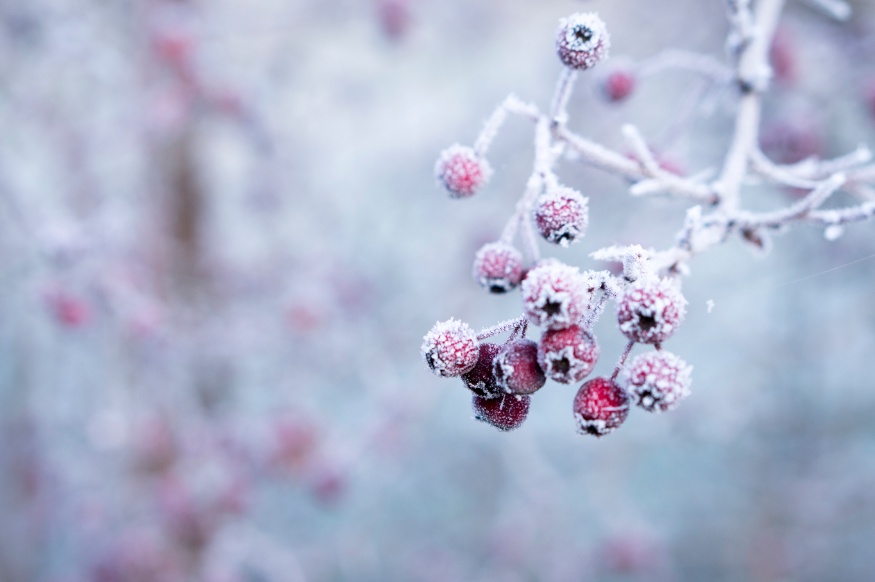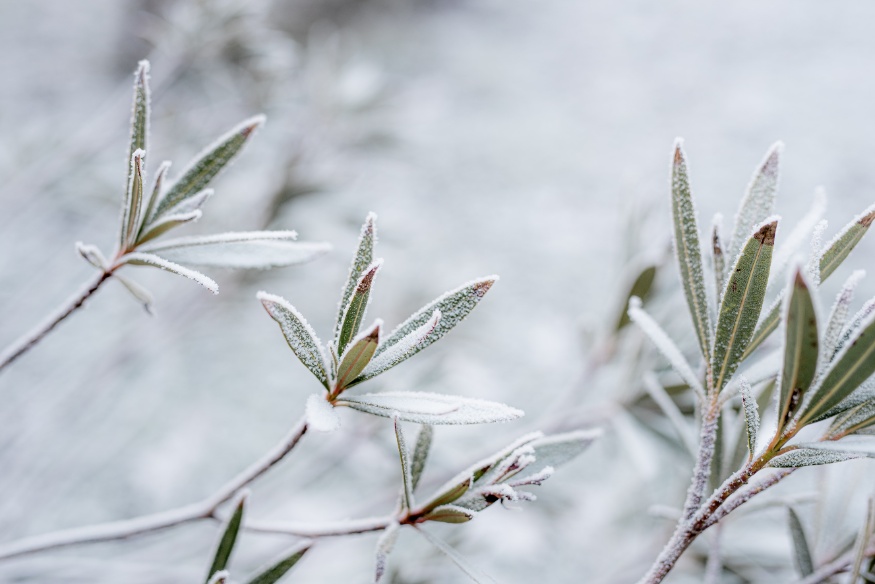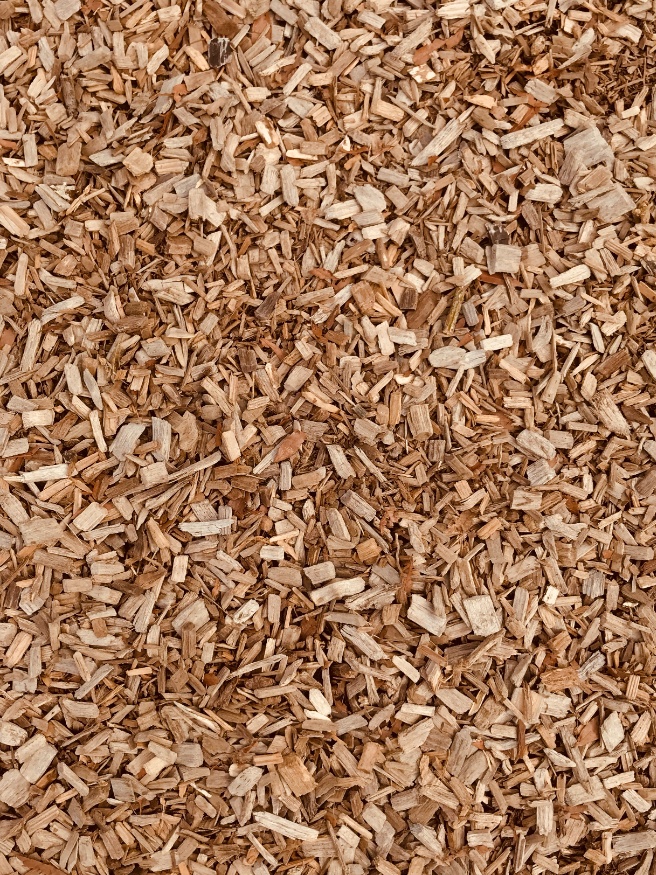Winter Protection for Woody Plants
Depending where you live, winter protection for woody plant roots, trunks and canopies may be necessary in your landscape. Selecting cold hardy native plants adapted to your conditions and ensuring they're healthy during the growing season is the best measure agains winter damage. This involves proper watering, nutrition, and pruning which strengthens and prepares them for the long winter months.

There are, however, situations where more protection is needed, and there are a few other simple things you can do to prepare. This could involve setting up braces and barriers to protect shrub canopies, using mulch or straw to protect roots, and applying cylinders or wraps to cover trunks. Many insects and pathogens overwinter in fallen leaves and fruit. If this is a concern, dispose of the fallen debris before preparing for winter. Whatever the situation is, plants need to brace themselves for winter on their own at first (harden off). So a good time to start setting up would be after leaves have fallen and the cold weather sets in.
Protecting Leaves and Buds
Evergreens like yew, hemlock and arborvitae can be susceptible to wind burn, and sun scald on their leaves. Dry air and wind can cause desiccation (drying out) since their frozen roots may not be able to replace water loss from their canopies. Temperature fluctuations can also cause sun scald. Occasional warm temperatures and direct sun can deceivingly stimulate tender cell growth. When the temperature drops again, the tissues die, causing sun scald. One remedy for wind and burn is to plant evergreens in north and north-east facing areas away from the sun, and protecting them from strong winds. A covering such as Burlap/erosion control fabric or anything that gives coverage and air circulation can be used. Though common, studies have shown anti-desiccant to not be effective for evergreen foliage.

Flowering or fruiting trees and shrubs may experience winter dieback of their buds. This usually happens on delicate flower buds rather than those of leaves or stems. Avoid pruning and fertilizing in late summer as both of these practices may promote tender new growth not properly hardened off and prepared for the winter.
Protecting Branches
Heavy snow and ice can deform or break branches in upright arborvitaes, multi-stemmed trees, and those with poor branch unions or included bark. Properly pruned trees are less prone to these breakages. If still an issue, trees/shrubs and upright branches can be tied together using rope or twine. Lumber, snow fencing, and frames can also be used to support heavy snow and ice loads from above.
Trunk Protection
Sun scald on stems happens when newly planted or thin-barked trees such as cherry, linden, maple, or plum break dormancy on the bark. This usually occurs in areas exposed to sun such as the south or west sides of the trunk, or areas where lower branches have been pruned off. Use white tree wrap or white paint on the lower trunk from fall to spring in young trees and longer for those with thin bark. Rodents can also girdle the tree or shrub base by feeding on the cambium. Wrap the lower trunk base with cylinders or put up fences and barriers. This could be used to for both sun scald and rodent protection.
Root Protection
Roots are much less hardy than stems and crowns. Temperature fluctuations involving repeated warming and cooling can cause cracking from expansion and contraction. Young grafted plants are especially sensitive to bud union damage at their base. For these reasons, roots should often be of most concern regarding plant survival over winter months.
Soil naturally remains warmer than surface temperatures and cools down much slower that the surface in winter. Ensuring your soil has adequate moisture retaining properties such as compost and organic matter can allow it to stay warmer since moist soil retains heat better than dry soil. Applying 3-4 inches of mulch, using a thick layer of leaves/straw, or even leaving snow in thick layers can be a great way insulate and protect plants from from wind and extreme cold.

Road Salt
Salt spray from ploughs and traffic, also runoff from roads and cause cellular dehydration and be detrimental to certain woody plants. This can be prevent by avoiding excessive salt applications or using alternatives like calcium chloride, or calcium magnesium acetate. Barriers can also be used to block road and sidewalk salt sprays. Salt-tolerant trees/shrubs should be planted in vulnerable areas like roadsides and walkways. Some native North American salt tolerant trees include:
- Red oak
- White oak
- Black cherry
- Jack pine
- Black locust
- American buckeye
Last Words
If some winter trauma does occur, prune out damaged plant material in late spring or summer after new growth appears. Plants are resilient, and will attempt to correct themselves if given the chance. Again, I prefer to select native plants as a first choice, and other cold hardy non-native alternatives as a second. This, along with good cultural practices, proper planning, and protection will give your woody plants the upper hand in battling winter ice, snow, and freeze-thaw cycles.
References
Brown, F., University of California Agriculture and Natural Resources. (n.d.). How to protect plants from frost. Retrieved from http://marinmg.ucanr.edu/Our_Projects/Leaflet/How_to_protect_plants_from_frost/
Iriarte, F. Extension Plant Pathology? Iowa State University. (n.d.). Prepare Your Plants for Winter. Retrieved from https://www.extension.iastate.edu/news/2009/oct/061201.htm
Lewthwaite, K. The Woodland Trust. (2020). How to protect your plants in winter. Retrieved from https://www.woodlandtrust.org.uk/blog/2020/11/how-to-protect-your-plants-in-winter/
University of Minnesota Extension. (2018). Protecting trees and shrubs in winter. Retrieved from https://extension.umn.edu/planting-and-growing-guides/protecting-trees-and-shrubs-winter#deer-972413